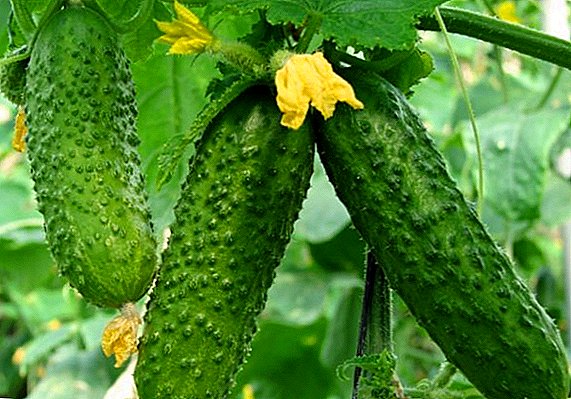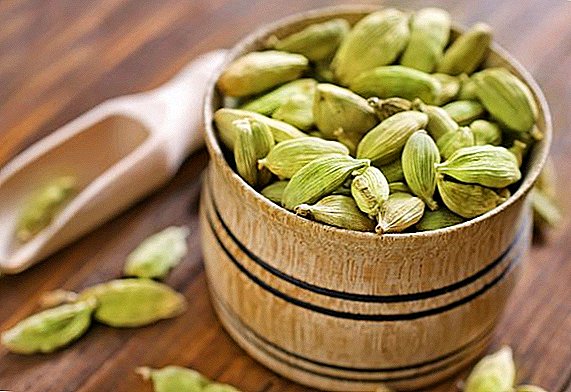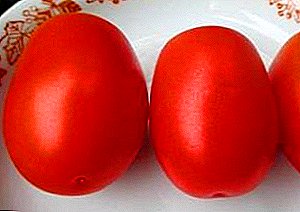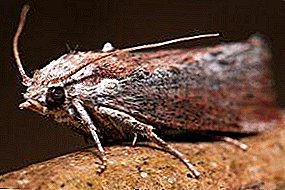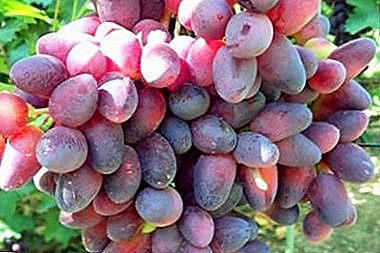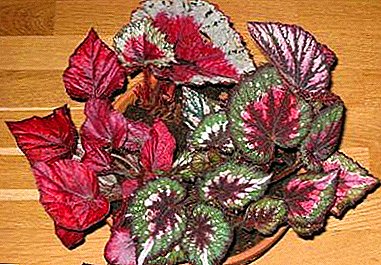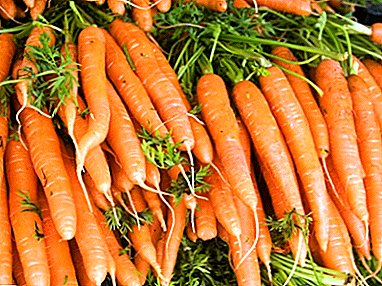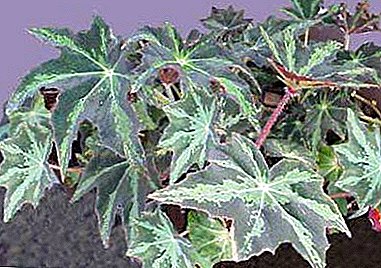 Bristles, Mogar Chumiza, mice, setaria - all these names refer to the same plant Setaria italica, which is found in the steppe and forest-steppe zones.
Bristles, Mogar Chumiza, mice, setaria - all these names refer to the same plant Setaria italica, which is found in the steppe and forest-steppe zones.
It has useful properties, used in agriculture, landscape design and traditional medicine.
We learn more about the chemical composition, useful properties and methods of growing bristles.
Botanical description
Bristle - an annual plant of the family of cereals. Straight, smooth stems grow alone or in bunches, reaching a height of 20 cm to 1 m. A well-developed root system penetrates the soil to a depth of more than one and a half meters and a width of 30 cm to 80 cm.
The leaves are long, linear-lanceolate, leaf width up to 15 mm. The inflorescence in the form of a dense cone is covered with bristles of green or purple color. The length of the inflorescence is from 3 to 12 cm. Fruits are grains of an oval shape, one plant gives about 7 thousand seeds. Propagated by these seeds, which remain viable for 7 years. 
Did you know? The scientific name of the genus to which the plant belongs, Setaria, comes from the Latin word "seta", which means "bristle".
Spread
Bristles are widely distributed throughout the territory of the former USSR, especially in the chernozem strip. He prefers well-humidified places near rivers and other sources of water, along roads, in wastelands. Grows in temperate and tropical climatic zones on all continents, it is considered a weed in the fields of grain crops.
Very popular and grown in China.
Chemical composition
This plant has a rich chemical composition: micro and macronutrients, vitamins, proteins, carbohydrates, fats. It contains a lot of starch, dietary fiber, polyunsaturated fatty acids, mono - and disaccharides, water.
Bristles is rich in:
- phosphorus,
- potassium,
- magnesium,
- gray
- calcium,
- by sodium
- iron.
 A rich set of vitamins of group B (B1, B2, B6, B9), vitamins A, E, beta-carotene and a significant amount of vitamin PP make the bristles a very useful plant.
A rich set of vitamins of group B (B1, B2, B6, B9), vitamins A, E, beta-carotene and a significant amount of vitamin PP make the bristles a very useful plant.Beneficial features
Due to its composition, the bristle is a cereal useful for human health. It can be eaten, which is especially recommended for vegetarians. The protein, which is part of setaria, is not different in structure from wheat protein, but does not contain gluten, therefore it is easier to digest.
The high content of vitamins of group B and magnesium has a beneficial effect on the state of the vessels, the work of the heart, nervous system, reduces pressure, reduces cholesterol levels. Iron prevents anemia and improves the activity of blood cells, calcium strengthens bones and prevents arthritis.
Important! Amino acid tryptophan in bristles lowers appetite and helps to lose extra pounds.
Application
Setaria is used in traditional medicine, in agriculture and as an ornamental plant in landscape design.  Tasty and healthy cereals can be made from the seeds of the plant, on water and milk, sweet and salty. They can be added to baking, and from flour - to cook noodles. Germinated seeds are very useful, they are consumed raw. Often they are used to make beer, wine and vinegar.
Tasty and healthy cereals can be made from the seeds of the plant, on water and milk, sweet and salty. They can be added to baking, and from flour - to cook noodles. Germinated seeds are very useful, they are consumed raw. Often they are used to make beer, wine and vinegar.
Especially a lot of bristles are grown in China and India. It is widely used in oriental medicine.
In folk medicine
The healing properties of setaria are used in the treatment of many diseases in traditional medicine, especially in Chinese.
The seeds of the plant contain an astringent that helps to improve the work of the gastrointestinal tract, eliminates flatulence and colic. In addition, from them receive:
- effective diuretic for the treatment of diseases of the excretory system;
- a drug that improves the work of the spleen;
- anti-inflammatory and antiseptic.
To establish the functioning of the spleen, white willow, soapwort, chestnut honey, milk thistle, gentian, barberry, lettuce, avran officinalis are used.
 Infusions and decoctions of rhizomes promote healing of wounds and accretion of bones during fractures, can stop bleeding, help with snakes and dogs bites, burns and bruises.
Infusions and decoctions of rhizomes promote healing of wounds and accretion of bones during fractures, can stop bleeding, help with snakes and dogs bites, burns and bruises.In the eastern folk medicine, decoctions and infusions of setaria are used to reduce pain in rheumatism.
Did you know? Cats are very fond of cats: if they get sick, they eat green leaves and treat them.
In agriculture
Bristles are grown in temperate and subtropical climates. In agriculture, it is used as green fodder, in the form of hay, silage for livestock. It is also grown to produce healthy and nutritious grain - an excellent feed for many animals and birds.
This plant contains a lot of sugar and it is easily digested. It is happy to be eaten by animals, after which the milk production of cattle increases, the chickens begin to nestle better.
Grain contains a large amount of protein and can be used not only as a feed crop, but also as food for humans.
Learn how to grow corn and sorghum for silage, how to silage feed.

In industry
Setaria has found its application in the alcohol industry. It is used for the production of beer, wine and other alcoholic beverages. Also on the basis of grain produce vinegar, yeast and starch.
Learn how to make vinegar, cider, limoncello, mint liqueur, mead, cherry juice, raspberry liqueur, plum wine, rose petal wine, compote, jam, grape and black currant.
In landscape design
Decorative quality plants are often used in landscape design when creating a variety of compositions. It looks great next to an artificial pond and harmoniously complements the alpine hills.
Beautiful and fluffy spikelets can be an ornament to any bouquet of flowers. Often used as dried flowers when creating flower arrangements.
In a dry bouquet, amaranth, celosia, helihrizum, craspedia, gypsophila, miscanthus, statice, Volzhanka, hearthound, and lunaria look spectacular.
Preparation of raw materials
The plant blooms in July-August, during this period it is mowed for harvesting hay and green mass. Hay must be harvested as soon as spikelets begin to appear, in order to preserve the maximum amount of useful substances. The green mass contains a lot of vitamins, micro and macro elements, sugar.
Grains are harvested at the beginning of autumn, in the phase of full ripeness.
Cultivation
For sowing, it is recommended to use weed-cleared fields, where barley, wheat, and corn were grown in the previous year.
The plant loves nitrogen and potash mineral fertilizers, it is drought-resistant and unpretentious, with very good yield, resistant to diseases and pests. It grows well on chernozem, but it can be grown on podzolic and sandy soils.
Soil preparation
After harvesting the field, the field must be cleared of weeds, peeled to a shallow depth of about 8 cm, and cultivated.
Sowing
To prepare the seeds for planting, they are etched with formalin.
It is possible to sow in the spring, only in well heated soil. The plant rises evenly at a temperature of 14-15 ° C.
Important! Young shoots bristles do not tolerate frost.
 Hay seeds are sown to a depth of 2-3 cm, in solid rows with a seeding rate of 20 kg per 1 ha, then they are driven by a roller.
Hay seeds are sown to a depth of 2-3 cm, in solid rows with a seeding rate of 20 kg per 1 ha, then they are driven by a roller.If bristles are grown for grain, then it is necessary to use a wide-row sowing method with a row spacing of 30-40 cm and a seeding rate of 15 kg per 1 ha.
Sowing care
Special care doesn’t require sowing, it is enough to periodically clean weeds and loosen the soil. It is also important to fertilize the crop at the beginning of the tillering.
Harvest
Hay setaria is removed as soon as the panicles start to be thrown. After mowing at a height of 6-8 cm, it is possible to harvest a second crop after regrowth.
Grains are harvested after ripening, when the color of the spikelet becomes brown.
Yield
One of the valuable qualities of bristle - high yield. It is much larger than other annual cereal crops. On average, 1.5-2 tons of grain and about 30 tons of green mass can be harvested per hectare.
So, we considered the useful qualities and the scope of the use of a very useful annual plant, we learned about its chemical composition and healing properties. Bristles are not difficult to grow, this unpretentious plant can be very useful in agriculture. With it, you can create beautiful bouquets and make a unique landscape design near the house or cottage.


